By: Alex Martinez
Teachers are always looking for new adapted physical education (APE) equipment to add to their inventory. Access to inclusive equipment is important to ensure the participation of students with disabilities during games, sports, exercise, and all activities in and out of the classroom. Many APE programs do not have the funds to purchase all of the skill development equipment necessary to provide children with quality and developmentally appropriate movement experiences. In order to reduce the cost of purchasing equipment, teachers can use creativity and imagination to build, adapt, or modify existing APE equipment. The main reason for this article is to highlight homemade equipment ideas that can be used in your APE program.
Sometimes new and expensive equipment is not needed. Modifications can be made to existing equipment so that students with disabilities can use it better. Modifications to equipment may mean that bats or paddles have Velcro strapping so that a student with gross motor difficulties may hold it easily. Other adaptations may include lowering a basketball net, using larger or smaller balls, or utilizing a tee to hold a ball. Students might use scoops for catching balls instead of their hands. Targets could be made larger and placed closer to the students.
Let’s take a look at some ideas:
| 2 liter bottle targets(courtesty of Carson-Newman University Physical Education Program) | Simply find a piece of wood and a few 2 liter bottles. Cut the bottles in half and glue them to the piece of wood. You can paint the board with some cool designs or you can paint numbers to the bottles so students can track their score when they successfully toss an object inside the bottle. To vary the degree of difficulty while playing, you can change the size of the objects that are being tossed, move the distance of the board, and use different sizes of bottles. |  |
| Jump Rope | For a student who uses a wheelchair or any student who cannot successfully jump rope, cut a jump rope in half and tie knots at the ends. You can also add a slight counter weight at the ends to help with rotation of the rope. | 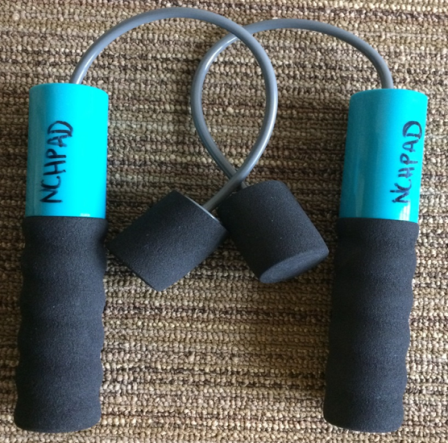 |
| Soccer Guards | For students who use a wheelchair (everyday, sports, or power chair), a simple guard can be made to fit on the front of the chair so it can “kick” the ball. To make the guard, all you need is sturdy cardboard and duct tape. Bend the cardboard to fit the outside of the footplate, resembling three sides of a square box. Then, duct-tape the guard onto the front of the chair using the front bars of the chair. | 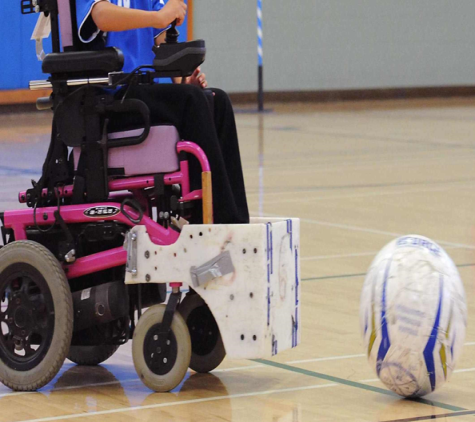 |
| Scooter Boards | For students who use a wheelchair or for students who take longer to get from one place to another, such as when moving from station to station, use scooter boards to facilitate quicker mobility. Use clean toilet plungers to facilitate mobility during scooter relays or races. | 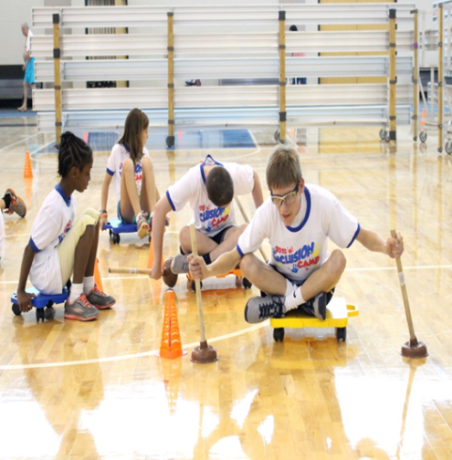 |
| Nets | Use alternative materials to create nets. A net could be made out of ropes or construction netting. Use PVC pipes to create poles that can be used for sports with nets that hang low such as tennis or sitting volleyball. You can use a heavy piece of wood at the bottom of the PVC pipes to avoid tipping. | 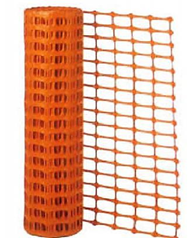 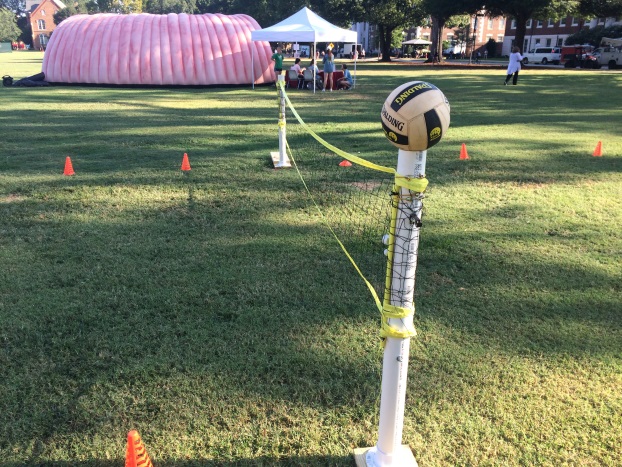 |
| Balls | For pre-school and lower elementary levels, use light weight balls or a balloon with duct tape around it to increase the speed of the flight. Do not use balloons if any of the students have a latex allergy. | 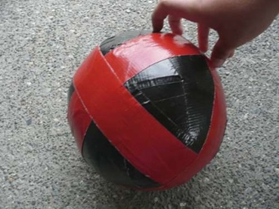 |
Give these ideas a try. If your creativity and building skills are limited, involve the students and other teachers in the process. The students will be more inclined to actively participate in a class that they helped prepare. Let NCHPAD know if you have ideas of your own, and please share them in the comment section below. For more homemade equipment ideas please visit the PE Central website at http://www.pecentral.org/preschool/prekhomemadeequipmentmenu.html
DISCLAIMER: When building this equipment, ensure that it is safe to use with students. Avoid sharp edges, loose parts, and materials that can trigger allergies, such as latex balloons. To ensure that equipment is safe to use, always test the equipment before using it with students.
